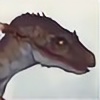HOME | DD
 raptorkillsall — Snakes of the Future
raptorkillsall — Snakes of the Future

Published: 2017-06-22 14:16:05 +0000 UTC; Views: 477; Favourites: 11; Downloads: 0
Redirect to original
Description
1. Calvaserpens or Skull SnakesEvolving later in the xenocene, in the range of 80 myf and beyond, they became a successful group of herbivorous snakes. They lost their fangs, and their teeth changed shape to become more suited to eating plants. The skin on the edge of their heads dissapeared, creating a beak made out of the edge of the skull. Generally small, they are mostly green colors, live in Eurasia, and evolved from the Red-Tailed Green Ratsnake.
2. Crassuserpens or Fat Snakes
A relative of the skull snakes, these snakes range from arboreal herbivores, to ground dwelling seed eaters, to camouflaged predators who can go without food for weeks. They are an extremely diverse group of snakes ho have a layer of fat around their middle allowing for better survival when food is in short supply. They can also be called camel snakes, and live in Eurasia.
3. Dracostagnum Tubuserpens or the Snorkeling Swamp Dragon
A species evolved from the Grass Snake, it shares it's ancestors affinity for amphibians, but this time hunts a different kind. It has a fin, a crest, and elongated nose tubes for snorkeling. It is an ambush predator with large sharp teeth.
4. Remuserpensus Lanxdenta or the Platetooth Oarsnake
Also a carnivore who likes testamphibians, this snake has fused its fangs into a deadly pair of scissors which can cut through shells and armor. It also hunts turtles. It has a row of small muscles attached to scales which act like small oars. It is also evolved from the Grass Snake.
5.Sempersoccis Duoserpens or Forever Partnered Double Snake.
A. The male, which has a weird body which is concaved upwards, allowing it to sit on top of the females ridged back comfortably;y. This species mate for life, and defend each other and raise their young. When one dies, the other is often too incapacitated to hunt on its own, and starves.
B. The female, has a ridged back to support the male, and eats rodents and other small creatures. They live in the mountains, and while the female hunts, the male sleeps. When the female must rest, the male uses its superior digestive system to eat the leftovers of its mate, and it's long jaws to eat insects and small animals that get too close. If it sees a predator, it alerts it's mate with a loud hiss.
Related content
Comments: 3

I'm not convinced that any of these, excluding the fat snakes, are particularly realistic. Herbivorous snakes aren't impossible but we need more than "their teeth changed" and making a beak from the skull is pretty unlikely.
The swamp dragon is okay but why does it need nose-tubes? No known aquatic snake, past or present, possessed such a feature so I find it highly unlikely that such a structure would evolve.
I fail to see what the 'oars' do for the oarsnake when actual swimming is a far more effective form of movement. The fused fangs could work but why? Stronger jaws and blunter, thicker teeth would be more practical to a turtle hunter. And why turtles instead of the countless other, softer, easier-to-eat lifeforms that a snake could hunt?
I like this idea. This sort of behaviour could potentially evolve from breeding balls, perhaps originally as a way of males securing a mate in the midst of a breeding frenzy, but there needs to be explanation of how it evolved.
👍: 0 ⏩: 1

OK. I can try to work on that. Thanks for the feedback.
👍: 0 ⏩: 1

No problem. I apologise if that sounded super critical btw.
👍: 0 ⏩: 0

















